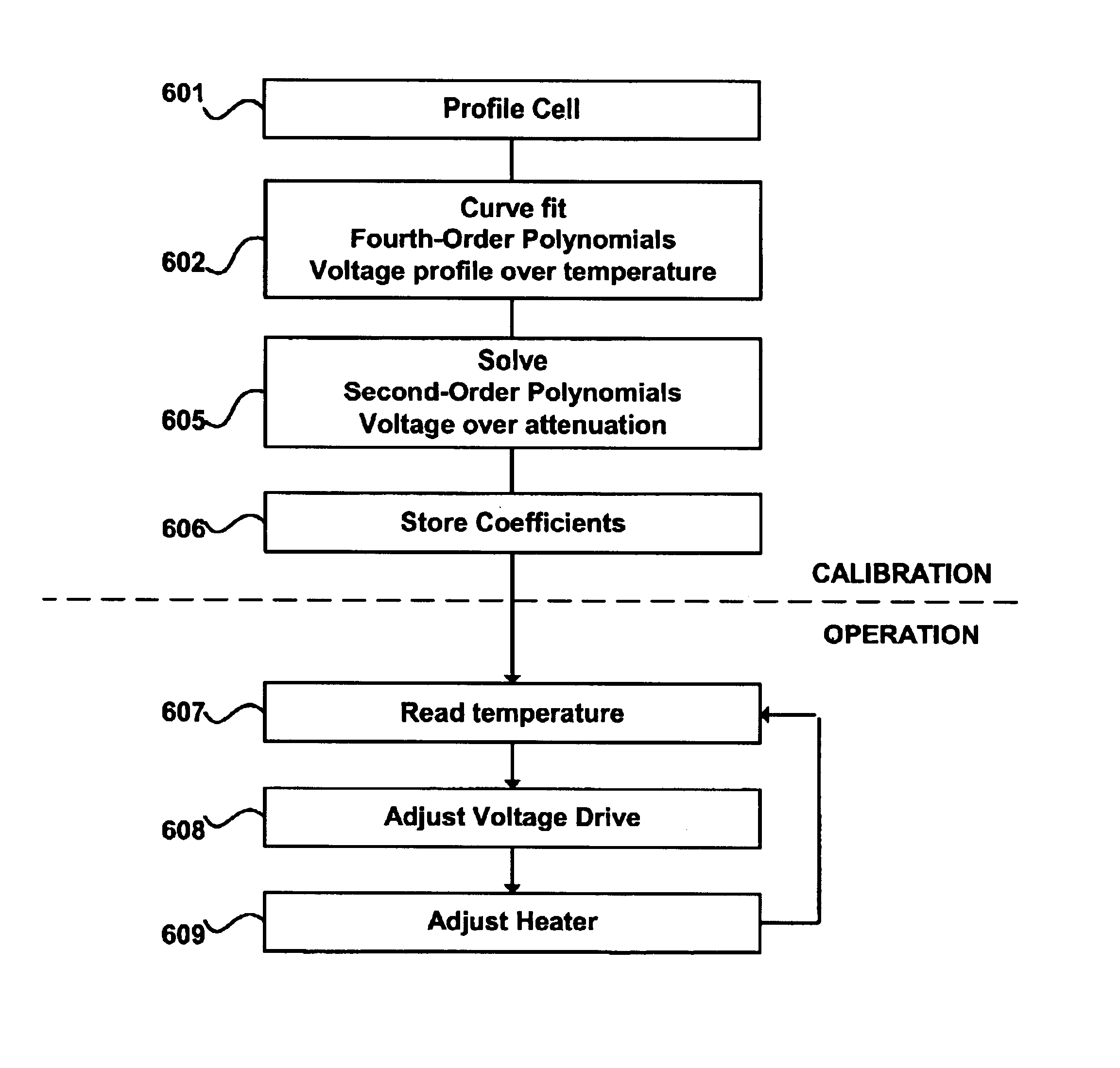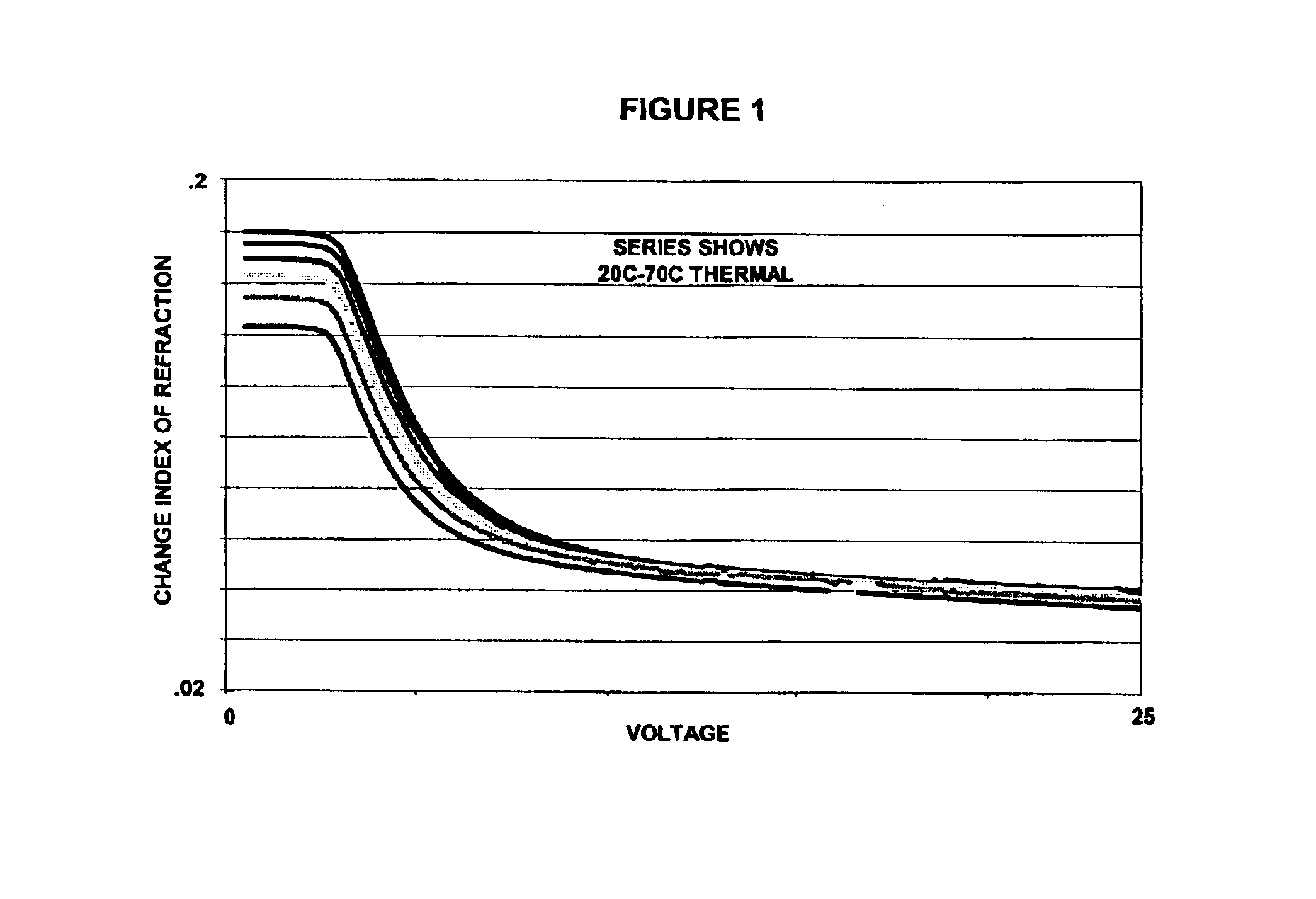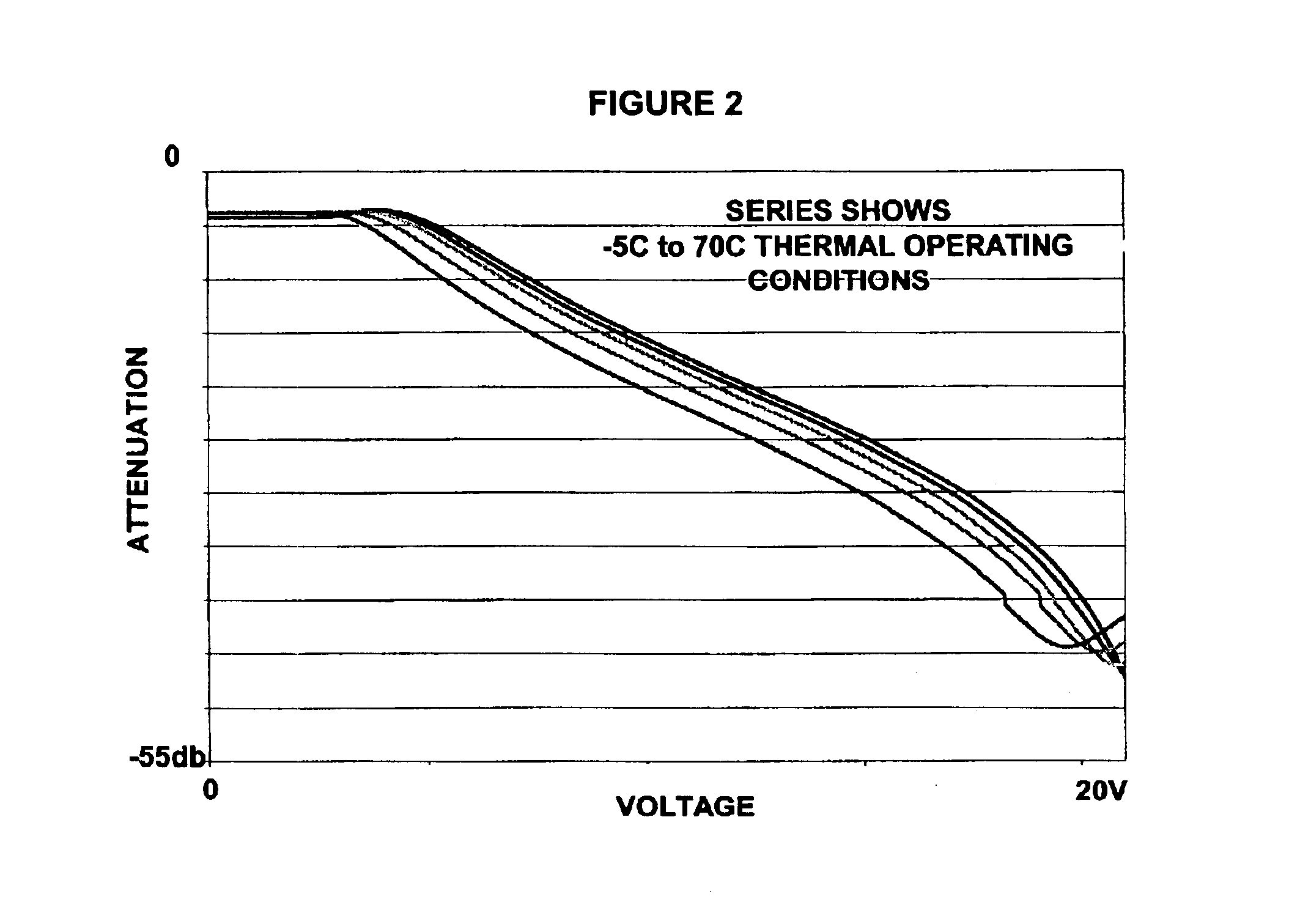Thermal control system for liquid crystal cell
a liquid crystal cell and control system technology, applied in the field of optical liquid crystal systems, can solve the problems of reducing optical performance, high insertion loss, and inability to provide the same high performance of integrated structures, and achieve the effect of accurate control of cell gap thickness
- Summary
- Abstract
- Description
- Claims
- Application Information
AI Technical Summary
Benefits of technology
Problems solved by technology
Method used
Image
Examples
first embodiment
[0047]the present invention is presented in FIG. 4A, which shows (not to scale) a liquid crystal cell platform 100 having a first substrate 110A in opposition to a second substrate 110B. In this embodiment, the first substrate may contain an inner surface having a transparent conductive electrode layer 104A, liquid crystal alignment layer 109A, a metal gasket element layer 106A and spacer element layer 107A. The second substrate 110B contains an inner surface having an a transparent conductive electrode layer 104B, a liquid crystal alignment layer 104B, metal gasket element layer 106B and spacer element layer 107B.
second embodiment
[0048]the present invention includes an integrated optical element 111 and is presented in FIG. 4B, which shows (not to scale) a liquid crystal cell platform 100 having a first glass substrate 110A in opposition to a second glass substrate 110B wherein the first substrate contains an integrated optical element 111 on one side of the substrate, a transparent conductive electrode layer 104A, a liquid crystal alignment layer 109A, metal gasket element layer 106A and spacer element layer 107A on the opposing side, and, the second substrate 110B containing a transparent conductive electrode layer 104B, a liquid crystal alignment layer 109B, metal gasket element layer 106B and a spacer element layer 107B.
third embodiment
[0049]the present invention is presented in FIG. 4C, which shows a liquid crystal cell platform 100 having a first glass substrate 110A in opposition to a second glass substrate 110B wherein the first substrate contains an integrated optical element 111, a transparent conductive electrode layer 104A, a liquid crystal alignment layer 109A, a metal gasket element layer 106A, a spacer element layer 107A and an integrated heater / temperature sensor element layer 108A. In this embodiment, the second substrate 110B contains a transparent conductive electrode layer 104B, a liquid crystal alignment layer 104B, metal gasket element layer 106B, a spacer element layer 107B, and an integrated active thermal element, heater / temperature sensor layer 108B.
PUM
 Login to View More
Login to View More Abstract
Description
Claims
Application Information
 Login to View More
Login to View More - R&D
- Intellectual Property
- Life Sciences
- Materials
- Tech Scout
- Unparalleled Data Quality
- Higher Quality Content
- 60% Fewer Hallucinations
Browse by: Latest US Patents, China's latest patents, Technical Efficacy Thesaurus, Application Domain, Technology Topic, Popular Technical Reports.
© 2025 PatSnap. All rights reserved.Legal|Privacy policy|Modern Slavery Act Transparency Statement|Sitemap|About US| Contact US: help@patsnap.com



